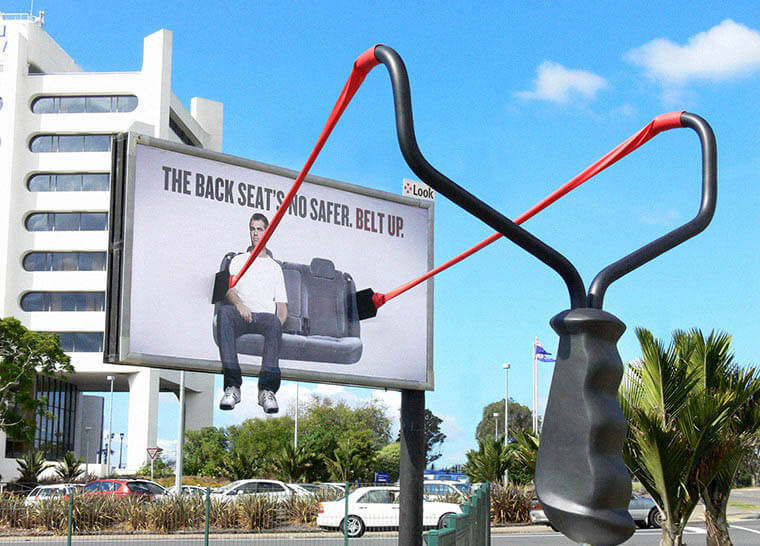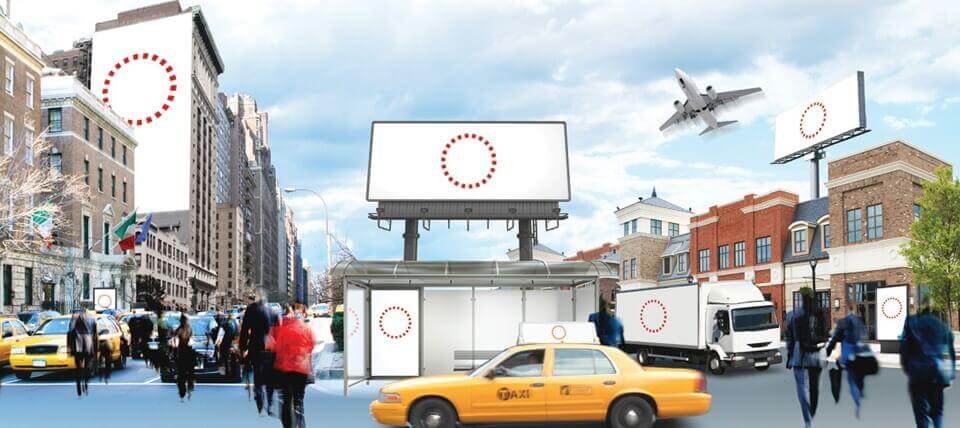
How to Effectively Implement Your Own OOH Advertising Campaign?

Source- Recmedia
Out-of-home (OOH) advertising is a powerful tool for reaching a wide audience and increasing brand visibility in the physical world. Whether you’re promoting a new product, launching a marketing campaign, or simply aiming to raise brand awareness, an effective OOH advertising campaign can help you achieve your goals.
Launching successful out-of-home advertising (OOH) campaigns on your own can be a little tricky, especially if you don’t have any prior experience or professional knowledge in the OOH Industry. Don’t worry! This brief checklist will prepare you for launching your ad campaign like an advertising expert. Crafting an OOH campaign or advertisement differs significantly from designing a magazine or digital ad. A successful OOH campaign relies on creative design that captivates your audience in ways that other advertising channels cannot.
Competition is fierce in capturing the consumer’s attention, making clever concepts and strong graphic design essential for standing out. OOH advertisements must be persuasive, bold, and precisely targeted to make an impact.
- Know your target audience
Overly embellished artwork is not the first thing to consider when you’re just getting started. Instead, you should try to answer the following questions: To whom are you advertising? What kind of customers do you want to reach? How would this campaign and your target audience relate to your customers’ behaviors?To answer these questions, you need to create at least one buyer persona – also known as, a target audience profile. Developing a clear understanding of your target audience is the most important thing you do as an advertiser. Your target audience informs all elements of your social media strategy. A buyer persona helps you understand and identify the characteristics of your targeted customers in various ways – including demographics, lifestyle choices, and how they make purchasing decisions. Otherwise, you will struggle or your business will be doomed! It is reported that $37 billion is wasted in ad spend every year from ads that fail to engage the target audience.
Note: The more your ad appeals to your targeted audience, the higher the chances are that they will convert to customers. For example, if your target audiences are mostly car drivers instead of public transportation users, it is best to set up billboards in a busy intersection instead of posters at the bus stop or on the subway.
- In addition to the strategic aspects of implementing an OOH advertising campaign, it’s crucial to consider the creative elements that will make your campaign stand out. The visual design and messaging play a significant rol in capturing the attention of your audience and conveying your brand’s value proposition effectively. When crafting your campaign design, remember that simplicity is key. Aim for a clean and visually appealing layout that aligns with your brand identity. Consider using bold colors, compelling imagery, and concise copy that conveys your message clearly. By focusing on the aesthetics and visual impact of your campaign, you can create a memorable and engaging experience for your audience, increasing the chances of driving meaningful interactions and achieving your campaign goals.
- Set a SMART Goal
Once you have a clear image of who your audience is, you should create a goal for your advertising campaign. The goal should include five key factors: Specific, Measurable, Attainable, Relevant, and Timely. For example, suppose your purpose of the advertisement is to boost your retail sales, you should write down something like: ‘Increase monthly retail sales in North America by 80%, from $100,000 to $180,000, by September 1st, 2017. This way, your goal includes every detail that you need to know and everything that you need to achieve within the planned time range. - Create a KISS message
First impression is everything! Answer these few simple questions: Who you are? What are you selling? What makes you unique?
Then combine all the answers into a short and simple message that’s appealing and self-explanatory. It should be within three to eight words. Brand messaging is the way your brand communicates its unique value proposition and personality through its verbal and nonverbal messaging. Your messaging can inspire and motivate them, making them want to buy your product. - Make plans based on your budget
Outdoor advertising channels differ in size, effectiveness, and price. At this point, you should have a clear vision of how many resources you will be using and what result you expect to achieve. Compare different out-of-home advertising methods, their advantages and disadvantages, unit prices, impression per mile, etc.
- Find the most effective advertising channel
As mentioned briefly before, each outdoor advertising channel has its unique way of appealing to people. When choosing channels, think of the most effective measures that would help you achieve your SMART Goal.Should you pick one expensive billboard located in a busy metropolitan area? Or various cheap billboards located beside highways? Is location important to your business? Where is your target located? Which channel do they pay attention to the most?
- Define your campaign targeting options
Visit your buyer persona and SMART goals once again and think whether it is essential to target specific locations or areas exclusively. Most of the time, the answer is “yes!”. Always start with a location you want to focus on and prospective customers you want to reach. You might consider using stationary advertising or moving advertising. Stationary advertising, like static billboards, are only visible to a specific and defined group of prospective customers. Moving advertising, like mobile billboards, are visible to audiences on-the-go, which is highly applicable to a fast-moving metropolitan city.
Read also: OOH and The Art of Storytelling
- Create a campaign design
After six steps we have finally reached the point of designing the marketing campaign. Your graphic design should reflect what you do, what you are offering, and the value that you give your customers. Your design and message should also reflect your target audience. In out-of-home advertising, your design plan should be simple, concise, and eye-catching. Less is more.
- Launch your campaign & analyze results
Once you have performed all the previous steps correctly, you should be ready to launch your first out-of-home advertising on your own! Congratulations!However, don’t forget to gather all the available data. Analyze the campaign performance, because the insights you gather from this campaign will help you to launch other campaigns even more effectively. After launching your outdoor advertising campaign, it’s crucial to monitor its performance to ensure you’re meeting your objectives. Tracking performance allows you to make necessary adjustments for optimal results. To gauge the success of your campaign, utilize key performance indicators (KPIs) such as website visits, social media engagement, brand awareness, and sales figures. Additionally, track the cost per impression (CPM) for each medium employed in your campaign. Be patient when assessing the outcomes of an outdoor advertising campaign, as it takes time for audiences to notice and engage with your ads. However, if after several weeks or months, there’s no improvement in KPIs or CPM rates, consider revising targeting strategies or creatives to enhance effectiveness.
- Go back to step 3 and repeat
Campaign results will allow you to re-evaluate your business goals and see whether they are realistic. Try as many out-of-home advertising methods as you can and do not hesitate to use the same approach if it is the most effective! So remember to measure the effectiveness of your OOH advertising campaign by tracking key performance indicators (KPIs) such as reach, frequency, and engagement. Utilize tools like unique URLs, QR codes, or dedicated phone numbers to monitor the response and conversion rates of your target audience. Analyze the data collected to gain valuable insights into consumer behavior, preferences, and the overall success of your campaign. Use these findings to refine your future campaigns, adapting your messaging, creative elements, and targeting options accordingly. Remember, continuous improvement is essential in optimizing your OOH advertising strategy and maximizing its impact on your business objectives.
Conclusion
Planning an outdoor advertising campaign entails establishing objectives, identifying target demographics, researching suitable locations, strategically selecting mediums, creating compelling creatives, executing campaigns, and tracking their effectiveness using metrics such as cost-per-impression rates. By following these steps, business owners and key decision-makers can optimize their return on investment (ROI) in out-of-home advertising, reaching wider audiences at a more cost-effective rate compared to traditional mediums. Are you delving into out-of-home advertising? Have you found our suggestions beneficial? If you require further assistance in planning your next OOH advertising campaign, we invite you to explore our arena advertising opportunities or reach out to us today.






